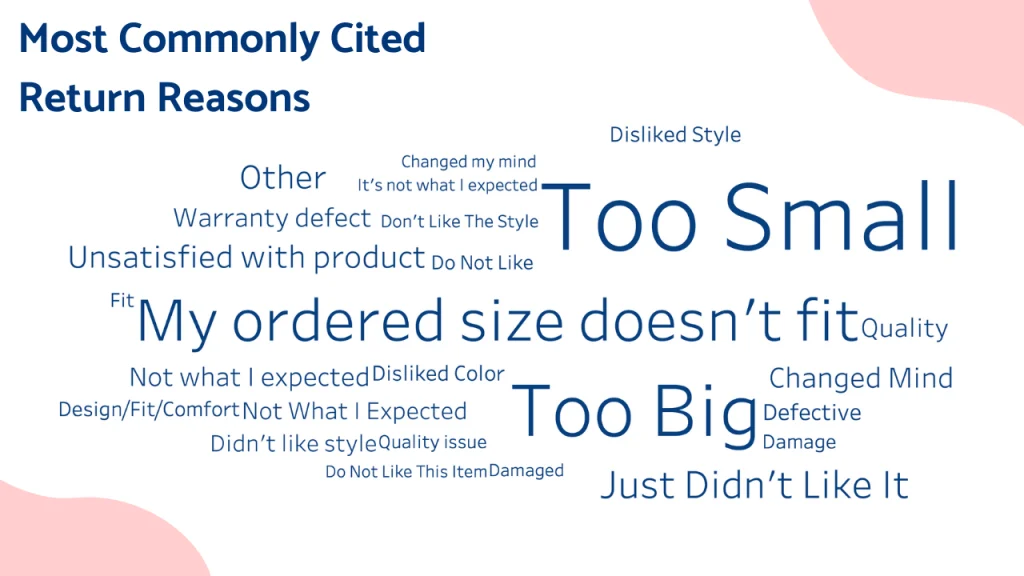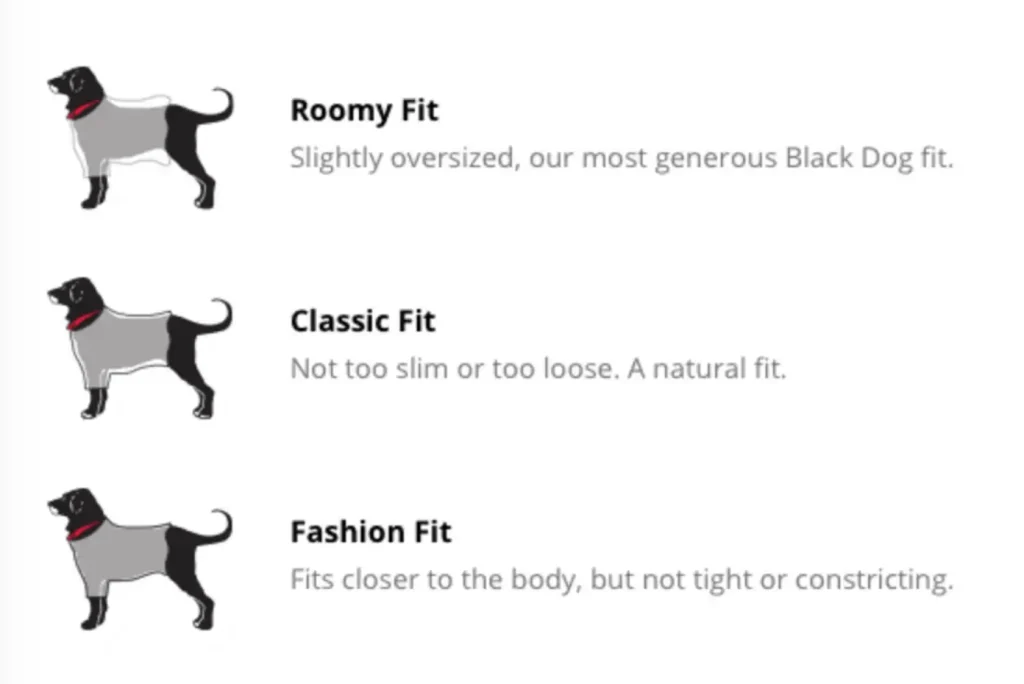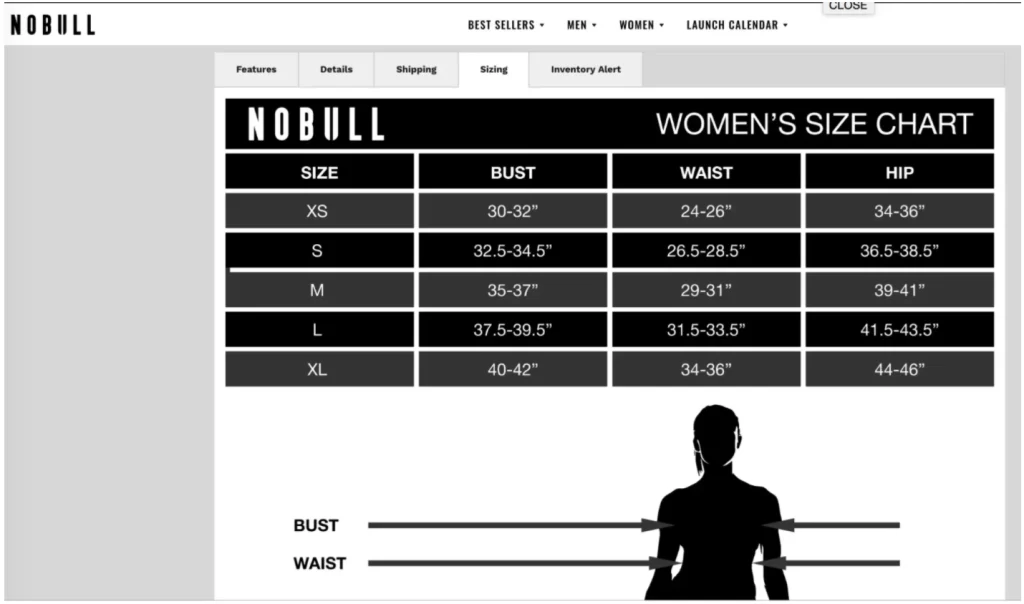How to Use Returns Data to Improve Your Ecommerce Business

Gaining Insights from Returns
Did you know your returns data is a goldmine of insightful information just waiting to be uncovered?
Using an automated returns management system allows ecommerce retailers like you to easily track their returns and gradually create a pool of data.
That data can be leveraged to provide insight into product quality, customer expectations, and weaknesses in the business operational process.
Below, we outline the top 5 ways returns data can be used to improve your business.
Method 1: Improve Your Product Descriptions
Accurate product descriptions build trust with customers. They help e-commerce shoppers make informed buying decisions without even physically seeing the product.
Returns data can be used to improve product descriptions to accurately illustrate each item so customers know what they’re purchasing.
This can be done in just 3 steps:
1) Narrow down product opportunities
Which products have the most room for improvement in their product descriptions?
2) Gather summary observations
What patterns are present in the return reasons? When an item is constantly being returned for the same reason, it’s a good indicator that there is a discrepancy in that product’s description. Maybe the sizing chart is inaccurate, or the color is misinterpreted, or texture listed for an item is not true to real life.
3) Extract precise insight
What further details do the return comments provide? Using word clouds can help pull out patterns across hundreds or thousands of return comments.

Using these steps to form an analysis of the current state of product descriptions based on the data from returns show ecommerce retailers like you exactly where their shortcomings lie so they’re more equipped to bridge the gap between customer expectations and reality.
Method 2: Improve the UX Website Design
The same insight gathered from returns data can also be used to improve the overall user experience (UX) of the company website.
Let’s say a retailer discovers through customer returns comments that they have a product that’s sizes run larger than expected. They already stated this in the product description, however customers are missing it.
Providing an image or chart of how the product is expected to fit will boost the shopping experience for customers by limiting confusion. This also improves brand perception by making the customer feel like the retailer goes the extra mile.

Image Source: The Black Dog

Image Source: No Bull Project
This is just one example of the many ways insight from returns data can be utilized to improve the shopping experience online.
Method 3: Improve Your Business Operations Process
The goal of any business is to provide the best experience for their customers. A seamless internal process ensures that.
Analyzing metrics like average fulfillment time can be used to pinpoint and fix problems with staffing, resources, operating times, etc. to ensure all customers are getting their orders on time.
On the flipside, average RMA completion times can be looked at to discover any discrepancies in the reverse supply chain and RMA reports can be used to find times of the year that returns are being processed slower, or if returned products are being held up at a particular step of the reverse supply chain.
Optimizing the supply chain, both forward and reverse, ensures products get to where they need to be on time.
Method 4: Learn More About Your Customers
Providing the best experience to your customers is always going to be a top priority.
When an ecommerce merchant knows nothing about their customers, this task becomes close to impossible.
That’s where returns data comes into play.
Analyzing customer returns behavior using the RFM (recency, frequency, monetary) Model, merchants can segment customers into key clusters and form a more personalized marketing strategy, which will ultimately increase the customer lifetime value.
Advanced automated returns management software companies will typically form reports like this for retailers.
“Marketers use the RFM model to filter out and score each customer by their most recent purchase by date (which is the ‘recency’ segment), by each customer’s number of orders (their purchase frequency) and then by their cumulative order value over a specified period of time (for the monetary analysis piece).”
– Kunle Campbell from 2XEcommerce.com and host of the 2x Ecommerce podcast
Method 5: Reduce Your Retail Return Rates
The final and most obvious way returns data can be used to make profitable business decisions is by reducing return rates. You should want your products to stay in the hands of your customers.
While everything mentioned above will help to reduce return rates, our giant pool of returns data from retailers across industries lets us make discoveries that would be hard to uncover if you were just looking at the returns data from your company.
We’ve uncovered some valuable insight on reducing return rates: Offering warranties as a return type reduces the refund rate by 10%.
No other return type has such a drastic effect on refunds, not even exchanges. In fact, offering exchanges has almost no effect on requested refunds.


Image Source: ReturnLogic Internal Data
The warranty marketplace has seen tremendous growth over the last few years and is continuing to gain popularity thanks to the rise of ecommerce.
Of course, this is just one discovery that could help retailers reduce return rates. And more are constantly being discovered as the pool of returns data continues to grow.
Conclusion
Returns are becoming more popular as more and more people shop online. But those returns aren’t a detrimental part of ecommerce business.
Customer returns behavior can be analyzed to identify which parts of the business can be improved to reduce return rates and increase the loyalty of customers.
To see an example of an actual e-commerce company that was able to improve their business practices based on returns data, check out our case study on Ecru, a women’s fashion brand that was able to cut their multi-size purchases by 15%.




